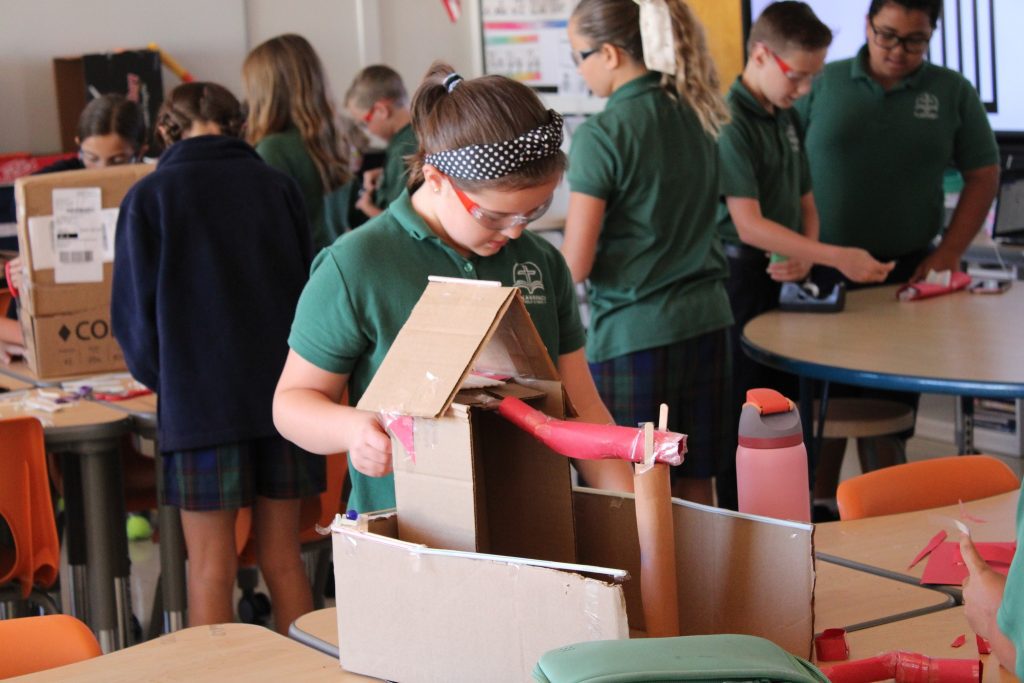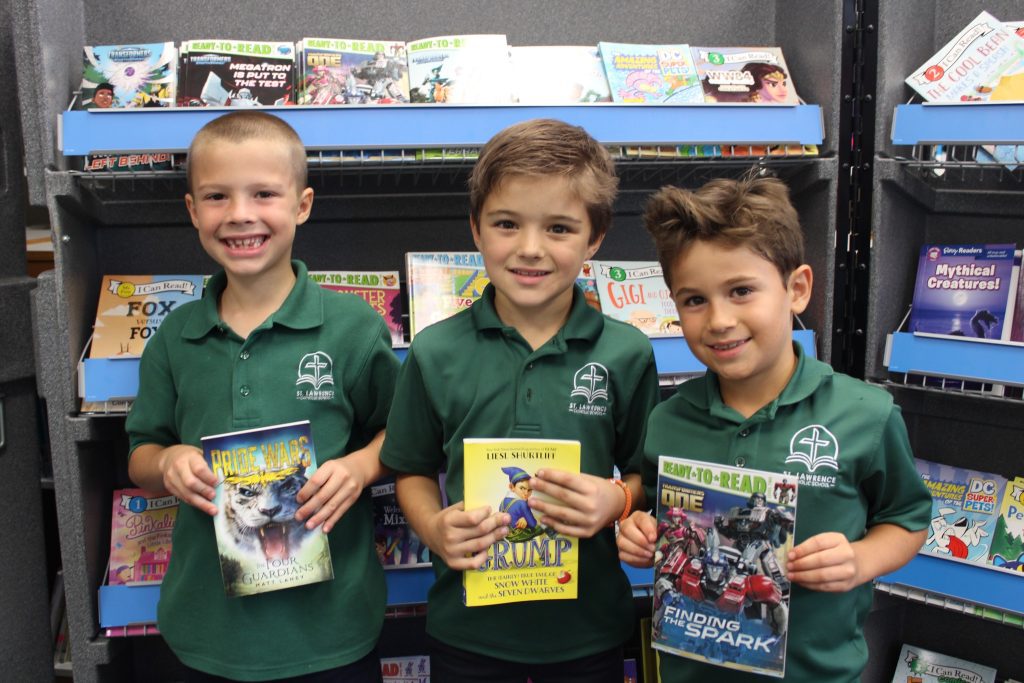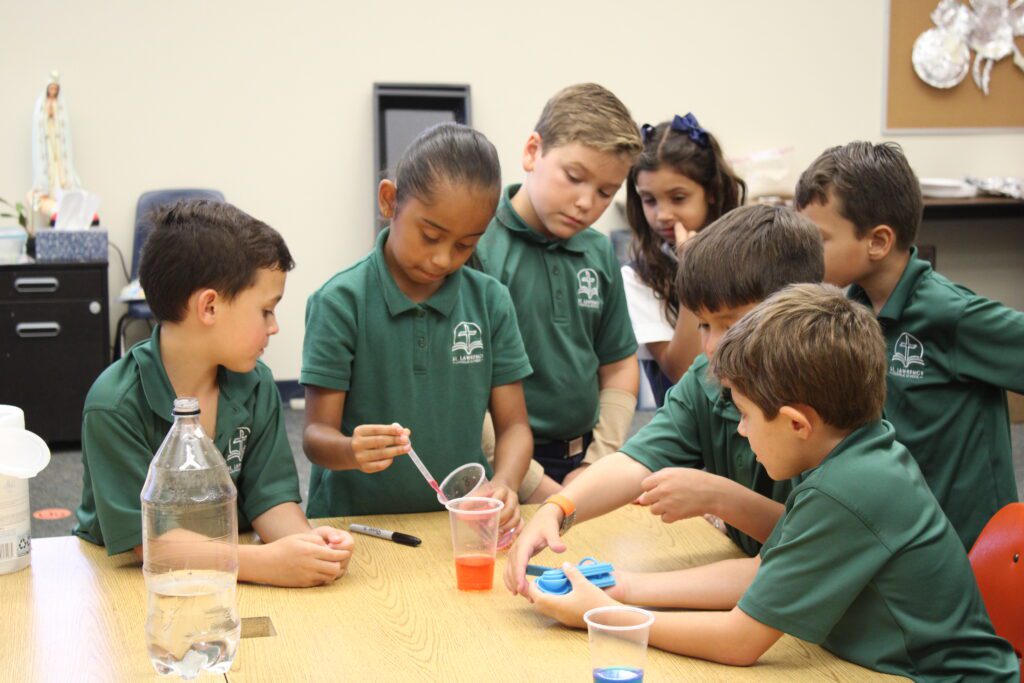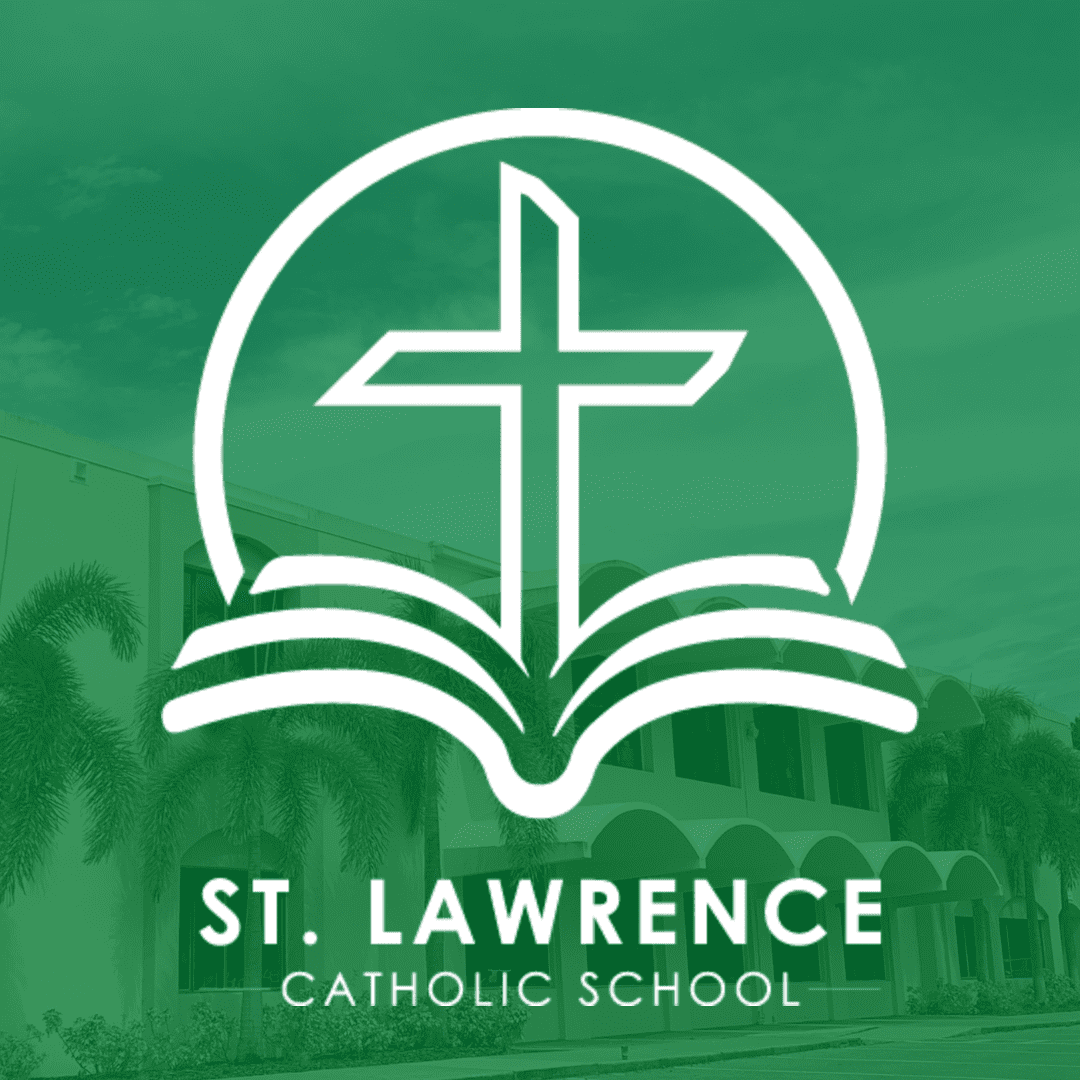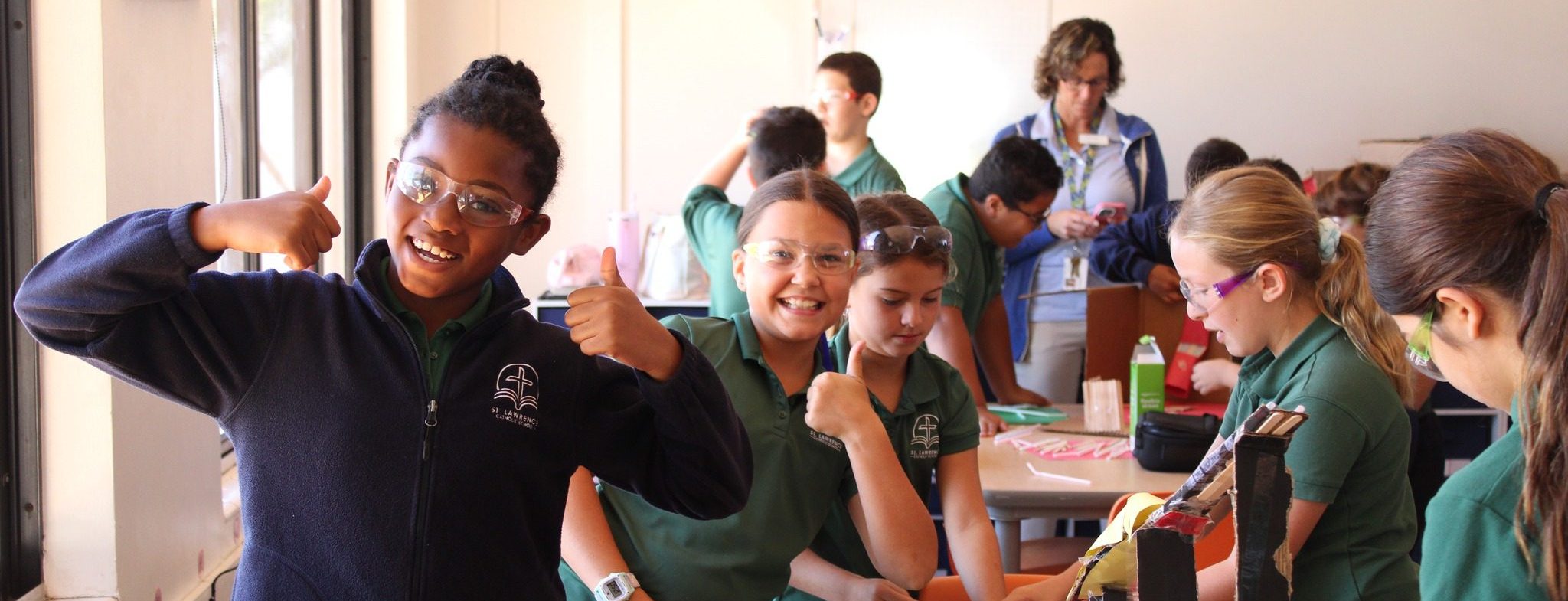Religion
Religion is the foundation of all of our instruction. Third grade religion is rooted in scripture, is faithful to the tradition of the Catholic Church, and invites all to create a relationship with the Holy Trinity. In third grade we grow upon what was learned in second grade when students receive their First Holy Communion. We learn and celebrate the mass as well as the sacraments. We focus on the saints as examples of living a faithful Catholic life. Instruction follows the liturgical church calendar and emphasizes our role as disciples of Jesus. Religious instruction is incorporated in all of our instruction throughout the year.
In the fourth grade, students take a closer look at the Ten Commandments. They learn what these Ten Commandments are and how we can follow the Ten Commandments to live a life like Jesus Christ. The students also grow in a deeper understanding of the seasons of the liturgical year as we prepare for each of the seasons. Overall, the students grow as disciples as they read scripture and share their beliefs with their classmates and community.
In the fifth grade, students take a closer look at the seven sacraments of the Catholic Church and discover the beauty and graces to be gained from each one. They grow in a deeper understanding of the love that Jesus has for each of them and their need to continue Jesus’ Mission on Earth in ways that call upon the strengths and special gifts given to them by God.
Instructional sources include the Bible and the We Believe textbook published by Sadlier.
Math
Third grade math instruction moves from concrete to more abstract concepts. Students learn to apply the concepts previously learned especially in relation to real world situations. An emphasis on fluency of multiplication facts lays the foundation for division, fractions and much more. Students are challenged to master the facts in a fun and self-competitive environment.
Fourth grade students build on concepts they have been introduced to in lower grades such as place value, addition, subtraction, and multiplication. The students are then introduced to division concepts, fractions, and decimals. Throughout the school year we will use Simple Solutions to gain a better understanding of measurement and data, lines and angles, and polygons. Students will build on their knowledge of these concepts using a standard algorithm, a variety of strategies, and also by solving problems involving real world connections.
Instructional sources include Sadlier Math, Simple Solutions, and Prodigy.
Fifth grade students build on mathematics concepts introduced in the lower grades as they more deeply explore fractions and decimals and continue to develop their number sense so that they can mentally calculate estimated answers before smoothly using algorithms to arrive at precise answers. The students build on their prior knowledge and begin to apply geometry formulas to solve basic problems involving the area of regular and irregular polygons and the circumference of a circle. Students explore the measurements of central tendency to solve problems involving real-world situations.
Instructional sources include Sadlier Math and Simple Solutions as well as online resources including Prodigy and the Khan Academy.
Science
Third grade science curriculum empowers students to become more self-directed, curious, and accountable. We use hands on instruction to engage students in the different topics. Students learn to synthesize ideas, use evidence, and demonstrate their understanding of key concepts and skills. Topics of instruction include the areas of Physical Science, Earth Science and Life Science. Students expand on and learn more in depth about each topic.
Fourth grade students explore scientific concepts using evidence based learning to gain a deeper understanding of the concepts taught and the world around them. Some of the major concepts learned in fourth grade include energy and motion, Earth’s features, human body systems, and the history of planet Earth.
Instructional sources include the Elevate Science textbook and BrainPop.
Fifth grade students normally work in small groups to explore scientific concepts and utilize peer teaching and discovery learning to arrive at evidence based conclusions to gain a deeper understanding of the world around them. Major topics covered in the fifth grade curriculum include properties and changes in matter, Earth systems, and the solar system.
The primary science instructional source comes from the textbook, Elevate, published by Savvas.
ELA/Reading
Fourth grade students will learn to strengthen their ability to comprehend longer, complex reading passages on any topic for any reason. We will do this by completing reading assignments from longer text passages as well as shorter ones when text is extremely complex; making close reading and rereading of texts central to lessons; asking high-level, text-specific questions and requiring high-level, complex tasks and assignments; requiring students to support answers with evidence from the text; and providing extensive text-based research and writing opportunities (claims and evidence). We use Sadlier’s Grammar Workshop and Vocabulary Workshop. Instructional sources also include the Wonders literacy program from McGraw-Hill.
Students in the third through fifth grades build upon the reading and foundational skills developed in the primary grades. Reading across a variety of genres, including both literary and informational text, students develop skills of analyzing literature and close reading while fostering a love of reading. Quality, award-winning literature is read, and students in 5th grade create culminating projects at the end of novels that further enhance their reading experience. The development of vocabulary takes place within the novel reading and with Vocabulary Workshop by Sadlier.
Social Studies
Third grade focuses on learning about our world and how we interact with the planet, in particular, the regions of the United States. Students learn about economics and how people get what they want and need. Instruction also centers on the early settlers in America and how they influenced the formation of our country and government. Along with the earlier years of our country we study about being active participants in our communities and how diverse cultures have shaped those communities.
Fourth grade students will learn about Florida history focusing on exploration and colonization, growth, the 20th Century, and beyond. Students will study the important people, places, and events that helped shape Florida history.
Fifth grade students develop an understanding of our country’s history, ideals, and government. Beginning with a study of the first Americans who entered North America, students learn about the discovery of the Americas and the settlement and expansion of what was to become our current United States of America. With an understanding of the founding of our nation with the Declaration of Independence, and the ideals of democracy in the Constitution of the United States of America, students grow in citizenship skills. A planned annual field trip to Vigo Importing helps students see some of the imports and exports that are vital to our economy. A planned annual field trip to the Ybor City Museum and Columbia Restaurant allow students to see the variety of cultures that have contributed, and continue to contribute, to our local community.
Language Arts
Third grade language arts involves a comprehensive curriculum including, grammar, vocabulary, phonics, literature studies and cursive handwriting. Students receive in depth instruction in reading comprehension, fluency and vocabulary in order to develop higher order thinking and reasoning skills as well as becoming critical thinkers. Students continue to develop written expression skills to become creative and effective communicators.
Fourth and fifth grade language arts curriculum consists of spelling, grammar, and writing composition. Beginning with a foundation in effective paragraph writing, the students utilize the writing process to formulate an effective personal narrative, persuasive essay, and informational writing. The persuasive writing and informational writing units involve practice in research techniques and choosing reliable resources. To provide support for writing, students continue to practice correct spelling, punctuation, capitalization, and grammar utilizing the proofreading activities in Daily Oral Language and lessons in Grammar Workshop.
